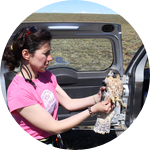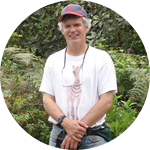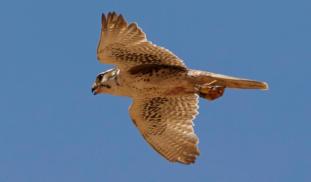Please wait...
About This Project
Predicting the effects of climate change on species at the top trophic levels is crucial because they can have major effects on ecosystems. Also, in species adapted to live in extreme environments, predicting responses to climate change is not straightforward but genetic data can tell us how climate affects their survival and reproductive success. We will assess genetic variation, kinship, and the effect of local climate on three breeding populations of Prairie falcons (Falco mexicanus).

Browse Other Projects on Experiment
Related Projects
How do polar bears stay healthy on the world's worst diet?
Polar bears survive almost entirely on seal fat. Yet unlike humans who eat high-fat diets, polar bears never...
Uncovering hidden insect diversity associated with a likely undescribed gall-forming midge
Does a likely undescribed species of gall-forming midge (pers. comm. Ray Gagné) on Eriodictyon plants (Yerba...
Macrofungi of the California archipelago
The eight islands of the California Archipelago are a well-studied biodiversity hotspot — but we know almost...





